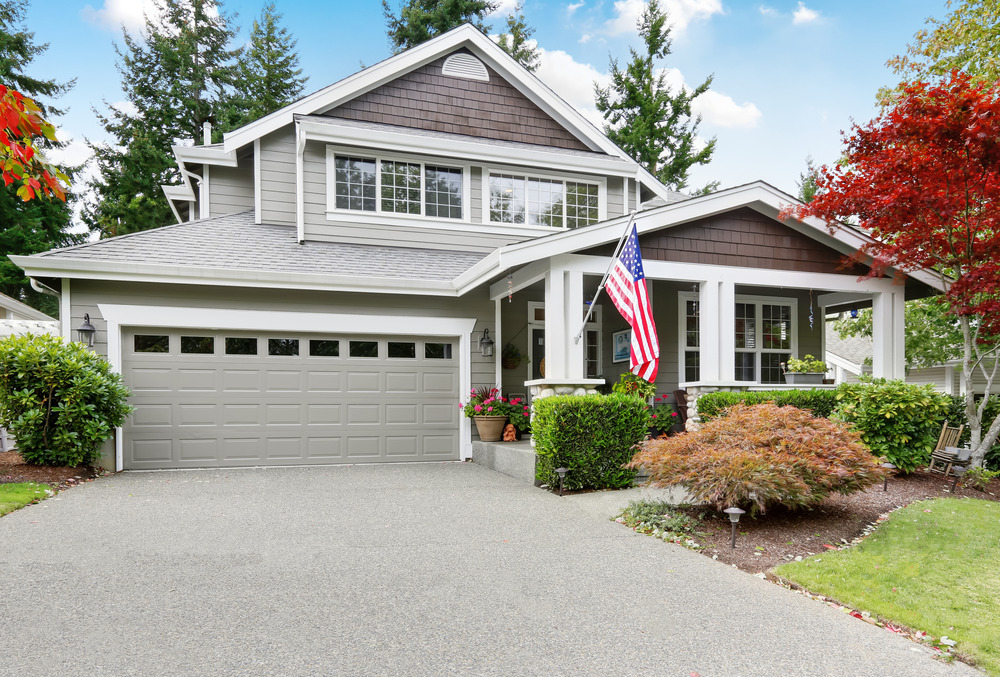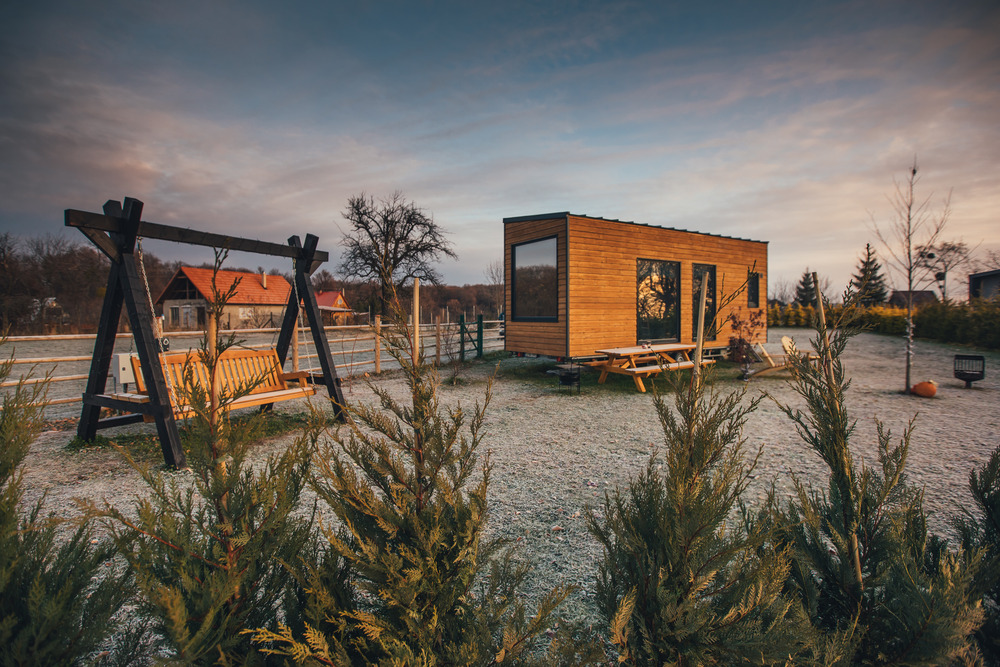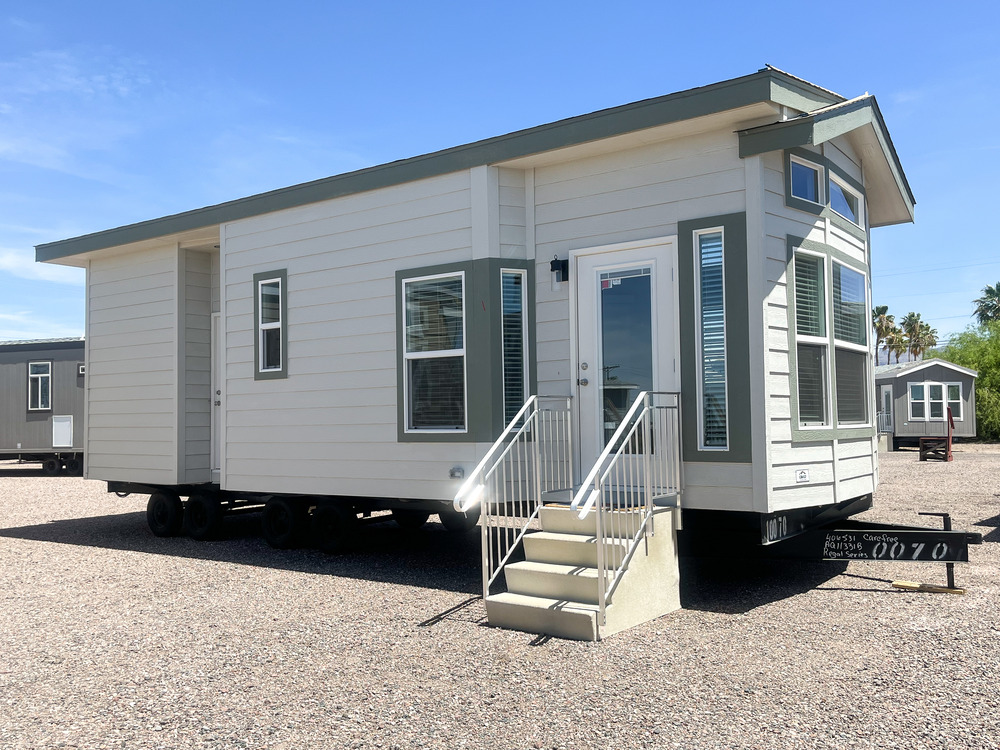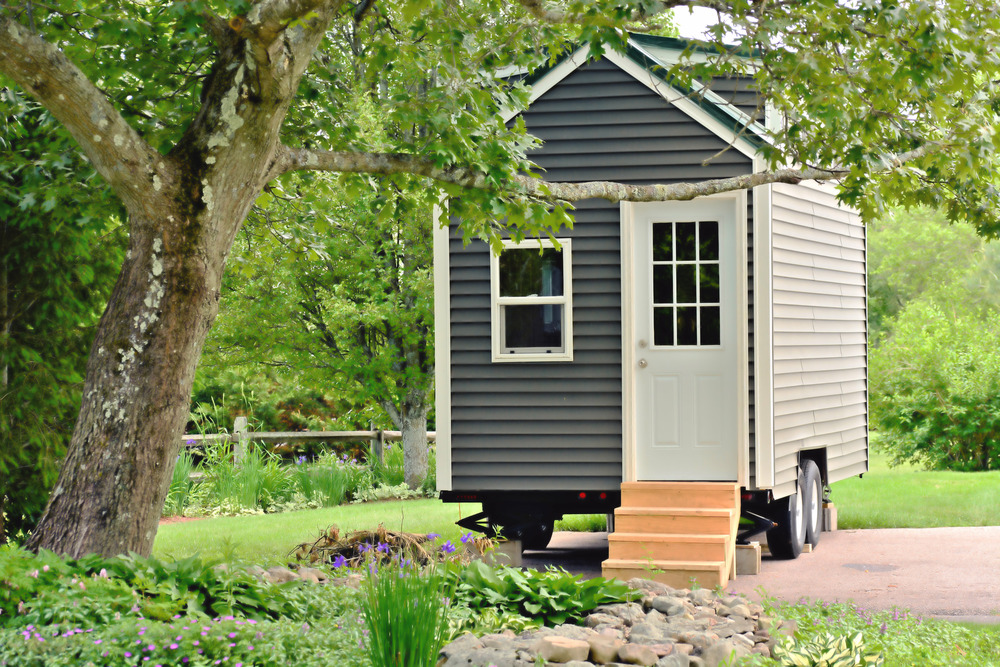Average American Home
Average American home size today is almost 2700 sq/ft, which is 1000 sq/ft more than in 1973. However, the average household size has decreased since then. This means that not only are our houses getting bigger but the average space per person is getting larger too.
Why do we need all this space? Frankly, for most people it’s to have some place to put all their stuff.
However, there is a growing movement towards smaller homes, less stuff, and living minimally. Unfortunately, this opens up a whole new can of worms regarding what is actually considered a small and/or tiny home.

Small Home
Since houses are getting larger these days defining what exactly a small house is can be tricky. Technically, anything smaller than the average home size could potentially be called a “small house”.
However, it is generally accepted that anything less than 1000 square feet and, more specifically, between 500-1000 square feet is considered a small house.
Tiny Home
Although the tiny home movement began in the 1980s, it has only been since the 2009 housing crisis that the movement began to really take traction. People, affected by foreclosures and a tight economy, started looking for ways to decrease their footprint and living costs by downsizing and turning towards a more minimalist existence.
The trend continues today with no end in sight. People are just ready to take control of their lives and reduce the stress caused by rising living costs and a lack of connection with nature.
Again, there is no official tiny home size definition but, in general, anything under 400 square feet is considered to be a tiny home. Tiny homes are built to the same specifications as normal size homes with the same building materials. The only difference is that they are smaller and, many times, incorporate more energy-saving, ecological innovations like solar panels and rain collectors in order to reduce costs and live off the grid.
So wide-spread is the tiny home movement that the 2018 International Residential Code (IRC) now includes a new Appendix Q for Tiny Houses that gives guidance on the requirements for tiny houses on foundations. This means that tiny homes that meet these requirements will be granted a Certificate of Occupancy that allows them to be permanent dwellings. It’s important to note that this new code is only for tiny houses on foundations and not tiny homes on wheels or mobile homes.

Tiny Home on Wheels
Taking it a step further there are tiny houses on wheels and generally these are the homes that die-hard tiny house enthusiasts are referring to and tiny home communities are built around.
Tiny houses on wheels are usually less than 120 square feet to allow for ease of towing and, if possible, exempt it from the need for a building permit. However, this exemption is a bit of a fallacy because generally any dwelling that you plan on living in will require a building permit no matter what the size.
According to the Recreational Vehicle Industry Association (RVIA), tiny houses on wheels are considered RVs and not suitable for permanent residence. They are looked upon as temporary, seasonal, or vacation housing. Though there are more tiny home communities popping up across the nation that are allowing these types of dwellings as permanent homes.

Park Model RV’s
Although many would like to consider RV’s tiny homes on wheels, however they are not. Tiny homes are typically built to last as long as a traditional home. Tiny homes are just smaller but they still use traditional building techniques and materials, which makes them very different from an RV.
However, Park Models are RV’s that are built to mobile park and RVIA specifications. Park Model RV’s must remain under 400 sq/ft because anything over those dimensions are considered a manufactured home and subject to applicable taxes and regulations.
Park Models are considered temporary housing for recreation, camping, or seasonal use. They are RV’s that look like a home but they still need to be hooked up to site electricity, sewer, and water like any other RV.
Park Models are tow-able but because of their large size most people leave them at a resort and return throughout the year rather than move them.
So although there are no real definitive definitions of what is truly considered a tiny home, there are some guidelines to help determine the difference and hopefully help you decide which is the right choice for you.
No matter what ‘tiny home’ your dealership sells, NetSource Media can help you with everything from website design, maintenance and management to social media and SEO.
For more information on how NetSource Media can help take your dealership to the next level give us a call today at (800) 709-3240 or click here to email us to get started.


